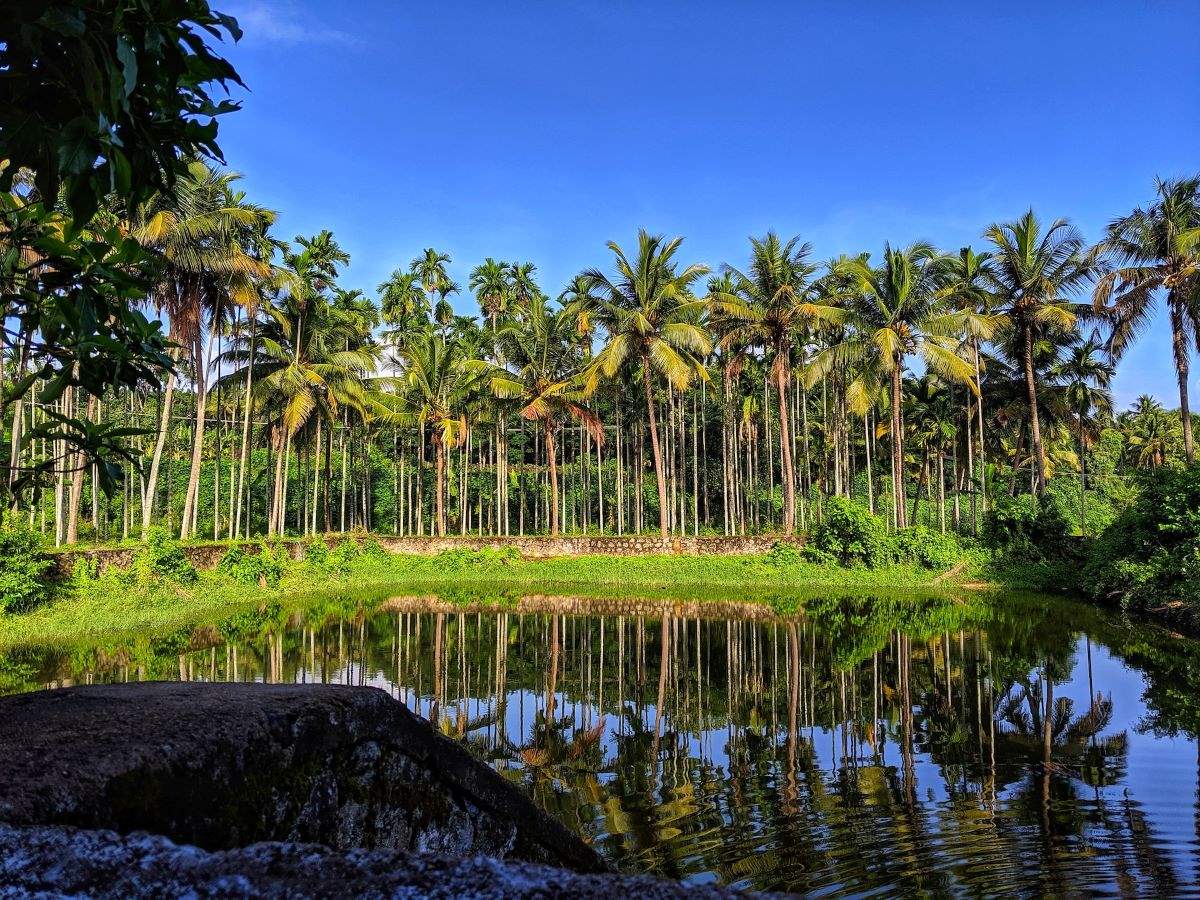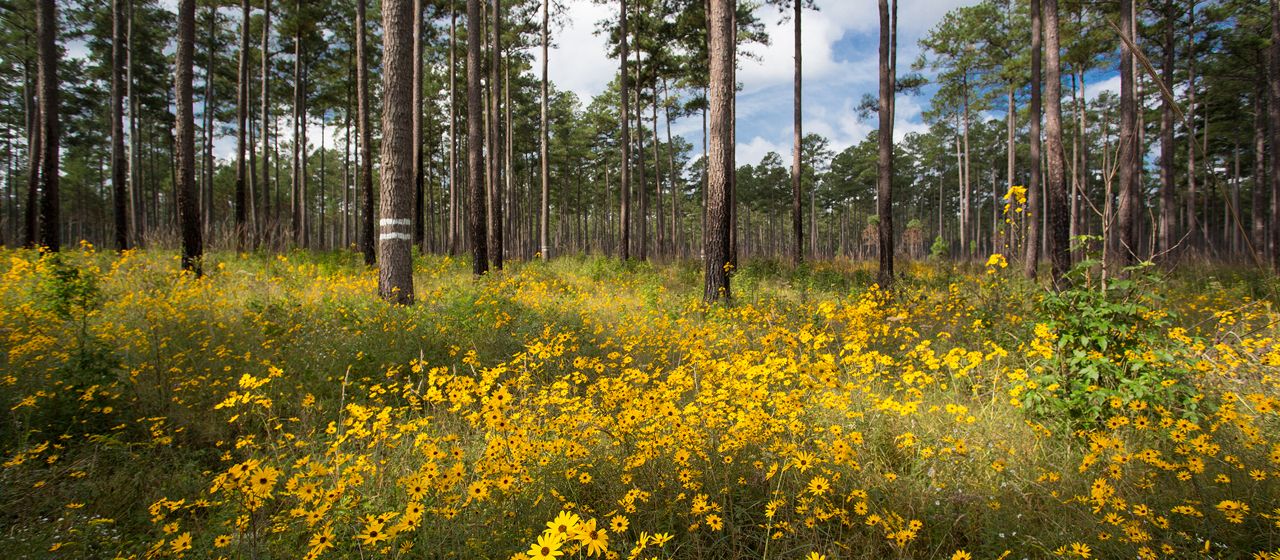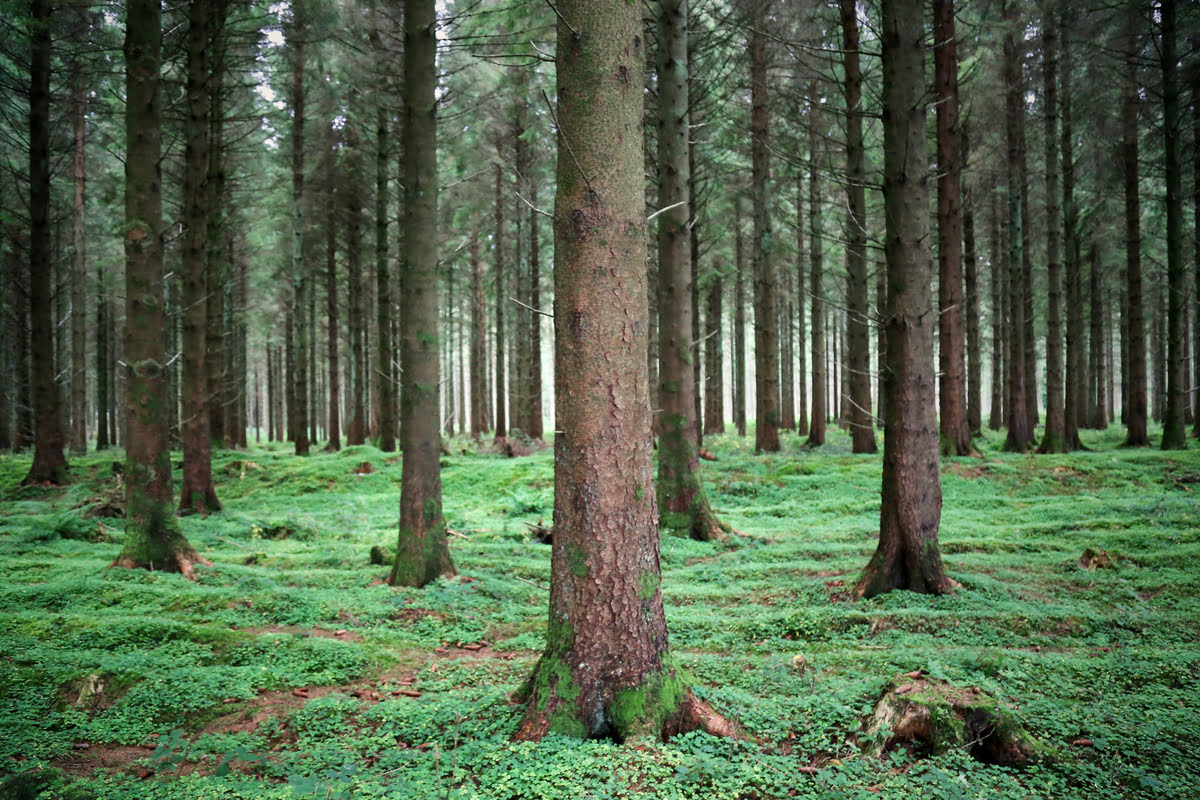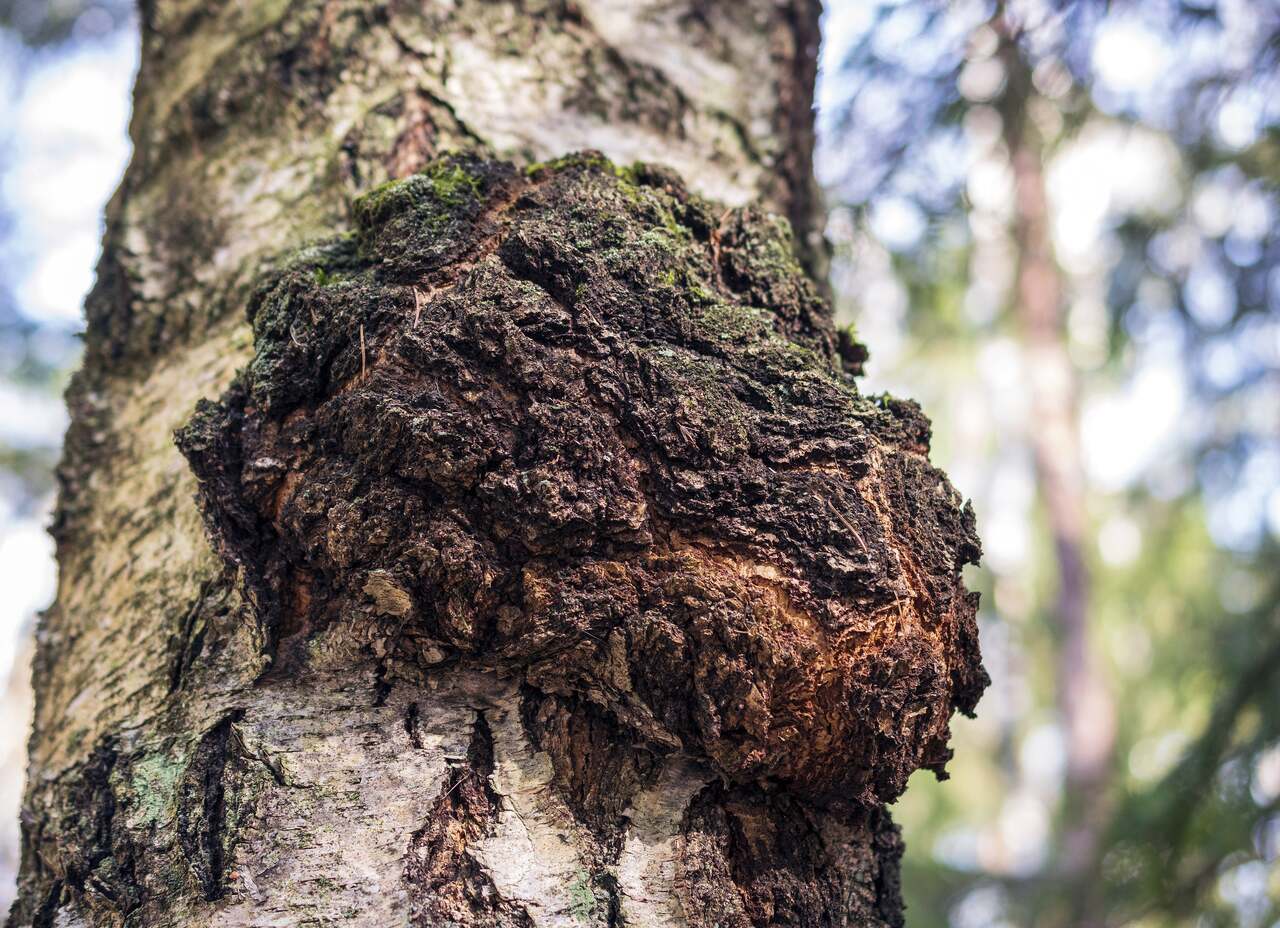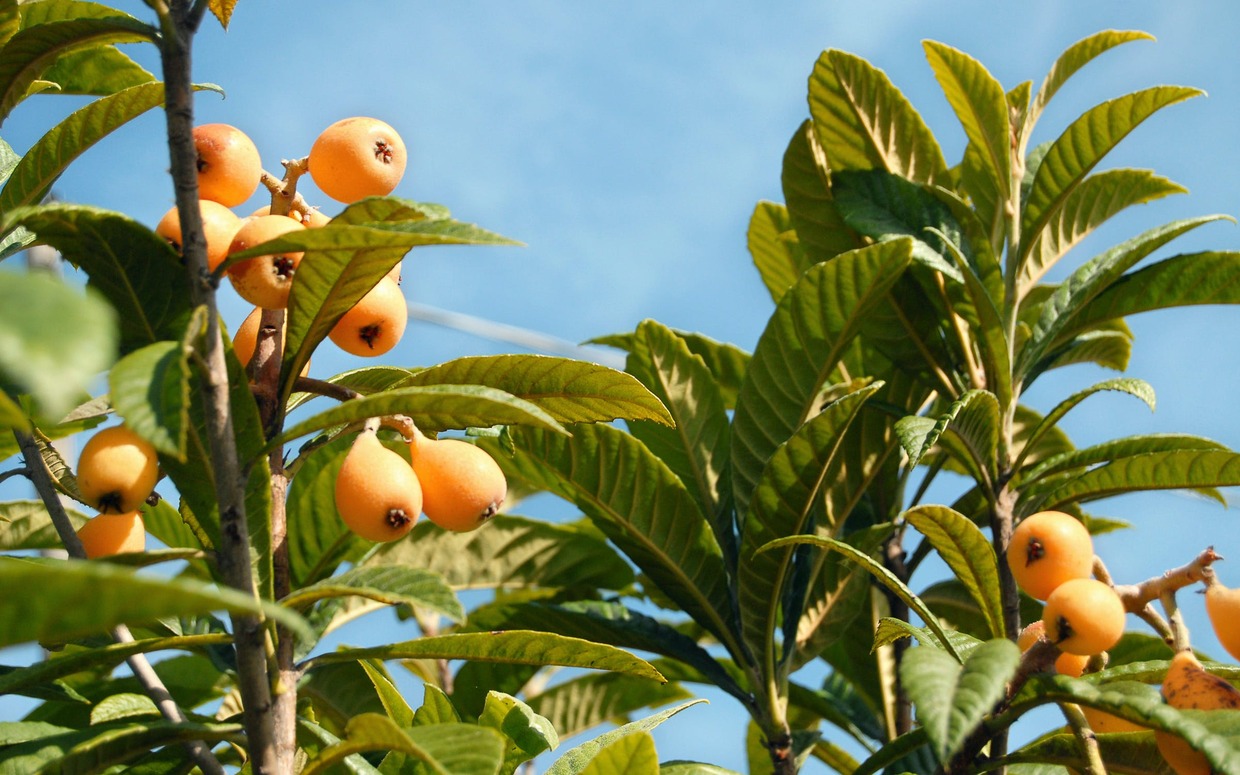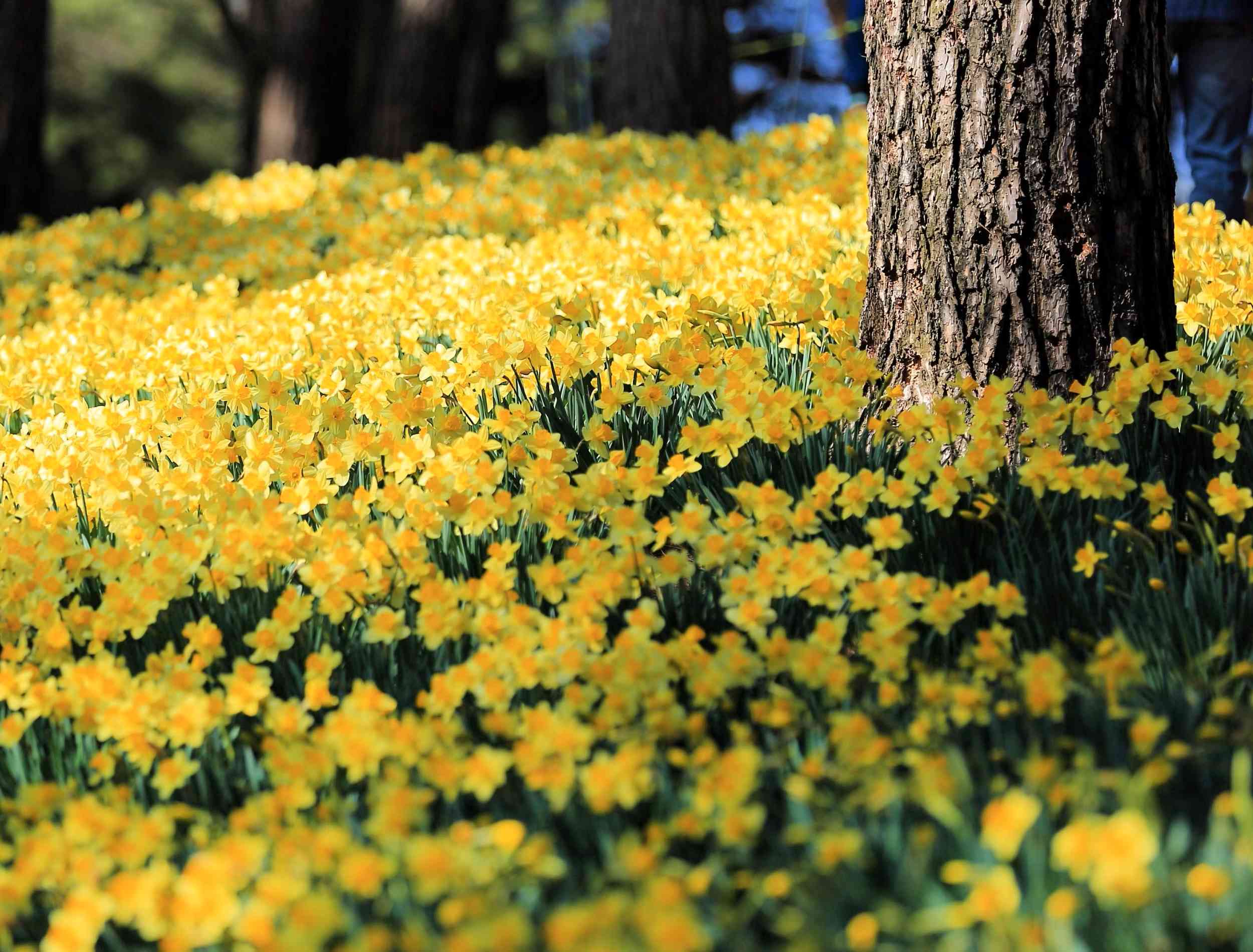Home>Gardening Basics>Understanding Soil>Moss Grows On What Side Of Trees


Understanding Soil
Moss Grows On What Side Of Trees
Published: November 12, 2023
Understand the relationship between moss growth and soil types. Discover which side of trees moss typically grows on in different soil conditions.
(Many of the links in this article redirect to a specific reviewed product. Your purchase of these products through affiliate links helps to generate commission for Chicagolandgardening.com, at no extra cost. Learn more)
Table of Contents
Introduction
When taking a leisurely walk through a lush forest, have you ever noticed moss growing on the side of trees? It’s a fascinating sight that raises the question – which side does moss typically grow on? Moss is a remarkable organism that thrives in moist and shaded environments. Its ability to grow on almost any surface, including tree trunks, has intrigued scientists and nature enthusiasts for centuries. In this article, we’ll delve into the intriguing world of moss and its relationship with trees.
Before we dive deeper, it’s important to understand what exactly moss is. Moss is a type of small, non-vascular plant that belongs to the Bryophyte division. Unlike most plants, moss does not have true roots, stems, or leaves. Instead, it absorbs nutrients and water directly through its leaves, which are arranged in clusters or mats.
There are various types of moss that can be found worldwide, with some being more common than others. One of the most widespread and easily recognizable moss varieties is the ‘acrocarpous’ moss, which forms cushion-like growth on trees. Another type is the ‘pleurocarpous’ moss, which spreads out in a creeping or hanging form.
Several factors influence the growth of moss, including light availability, humidity, temperature, and availability of nutrients. Moss tends to thrive in areas with high moisture and low light intensity, such as shady forests and damp environments. This is why we often find moss growing on rocks, soil, and, of course, the sides of trees.
But why is it that moss seems to prefer growing on the north side of trees? It is commonly believed that moss grows on the north side of trees due to the direction of sunlight. The north side of trees tends to receive less direct sunlight throughout the day, making it more shaded and creating a damp environment that moss prefers. However, this belief has been debunked by scientific research, which suggests that moss growth on trees is more complex and influenced by multiple factors.
In the following sections, we will explore the various factors that contribute to the growth of moss on trees and further analyze the relationship between moss and tree orientation. Let’s uncover the secrets of moss growth on trees and understand the fascinating world of these unique organisms.
What is moss?
Moss is a fascinating type of plant that belongs to the Bryophyte division, which also includes liverworts and hornworts. It is a non-vascular plant, meaning it lacks specialized tissues for transporting water and nutrients. Despite this, mosses have adapted to thrive in a variety of environments, from the moist forest floor to the surface of rocks and tree bark.
Mosses are small plants that typically grow in dense clusters or mats. They have simple structures, consisting of slender stems and leafy structures known as “leaves” or “phylloids.” These leaves are usually just one cell thick, making them highly efficient at absorbing water and nutrients from their surroundings.
One of the unique characteristics of mosses is their ability to tolerate desiccation. When moisture is available, mosses rapidly absorb water and become plump and vibrant. However, during periods of drought or extreme temperatures, mosses can enter a dormant state and tolerate dehydration. This adaptation allows them to survive in environments that would be inhospitable to many other plants.
Mosses reproduce through spores rather than seeds. Spores are tiny structures that are released by mature moss plants and carried by wind or water. When a spore finds a suitable environment, it germinates and begins to develop into a new moss plant. Mosses also have a unique life cycle that alternates between a gametophyte stage (the dominant stage) and a sporophyte stage.
Due to their ability to retain moisture, mosses play crucial ecological roles in various ecosystems. They help retain water in their environment, reducing erosion and providing a habitat for small organisms. Mosses also contribute to nutrient cycling by absorbing and storing nutrients in their tissues. Furthermore, they provide food and shelter for a wide range of animals, including insects, amphibians, and small mammals.
There are estimated to be over 12,000 species of mosses found worldwide, with a wide range of shapes, colors, and textures. Some common types of moss include carpet moss, cushion moss, and feather moss. Each type has its own unique characteristics and preferences for specific environmental conditions.
In the next sections, we will explore the factors that affect moss growth and examine the relationship between moss and tree orientation. Let’s delve deeper into the intriguing world of moss and uncover the secrets of its growth on trees.
Common types of moss
Mosses come in a wide variety of species, each with its own distinct characteristics and preferences. Let’s explore some of the most common types of mosses that you may come across in forests, gardens, and other natural habitats.
1. Carpet Moss: This type of moss, also known as Hypnum moss, forms dense carpets of green or yellowish-green foliage. Carpet moss is typically found growing on forest floors, rocks, and decayed logs. It has a unique ability to hold moisture, making it an excellent option for creating green landscape covers.
2. Cushion Moss: As the name suggests, cushion moss grows in dense, rounded mounds that resemble soft cushions. It forms tight clusters of green foliage with a velvety texture. Cushion moss prefers moist and shady environments, and you can often find it growing in the crevices of rocks or the base of trees.
3. Feather Moss: Feather mosses, also known as Hypnum mosses, are characterized by their feather-like branching patterns. They have delicate and intricate foliage that resembles the fronds of ferns. Feather mosses favor cool and damp habitats, such as forests and bogs.
4. Haircap Moss: Haircap mosses, scientifically known as Polytrichum, have distinctive hair-like structures called paraphyllia that cover their leaves. They form dense mats of lush green foliage, which can create a velvety appearance. Haircap mosses are commonly found in moist and shady areas, such as forests, marshes, and riverbanks.
5. Sphagnum Moss: Sphagnum moss, also known as peat moss, is found in boggy and wetland environments. It is highly absorptive and can hold significant amounts of water, making it a crucial component of wetland ecosystems. Sphagnum mosses have a unique branching structure and are often used in horticulture for water retention and as a substrate for growing plants.
These are just a few examples of the many types of mosses that exist in nature. Each moss species has its own unique growth habits, appearance, and ecological role. Exploring and identifying different mosses can be a fascinating endeavor, allowing you to appreciate the diverse and intricate beauty of these ancient plants.
Now that we’ve learned about common types of mosses, let’s delve deeper into the factors that influence moss growth and its relationship with tree orientation.
Factors affecting moss growth
Mosses are incredibly adaptable and can thrive in various environmental conditions. Understanding the factors that influence moss growth can help shed light on why they tend to grow on certain surfaces, including the sides of trees. Here are some key factors that contribute to moss growth:
1. Moisture: Mosses require a high level of moisture to survive and grow. They thrive in environments that provide consistent moisture, such as areas with high humidity or frequent rainfall. Moisture facilitates the absorption of water and nutrients through the moss’s leafy structures, promoting growth and reproduction.
2. Light: While mosses can tolerate low light conditions, they typically prefer areas with indirect or filtered light. Excessive direct sunlight can dry out the moss and hinder its growth. As a result, mosses are often found in shady environments, such as under tree canopies or in the north-facing sides of trees.
3. Temperature: Mosses can tolerate a wide range of temperatures, but their growth is optimal in cooler and mild climates. Extreme heat or freezing temperatures can cause stress or even kill mosses. Therefore, they are commonly found in locations with moderate temperatures.
4. Air quality: Mosses are highly sensitive to air pollution and require clean air to thrive. High levels of pollutants, such as sulfur dioxide and nitrogen oxides, can damage moss tissues and inhibit their growth. Mosses are often considered indicators of air quality, as their presence or absence can reflect the overall health of the ecosystem.
5. Nutrient availability: Mosses can grow in nutrient-poor environments, as they have the ability to absorb nutrients directly from the air and rainwater. However, the presence of certain nutrients, such as nitrogen and phosphorus, can enhance moss growth. Nutrients can come from sources like decaying organic matter or dust particles in the air.
6. Substrate: Mosses can grow on a variety of surfaces, including soil, rocks, and tree bark. The substrate provides a base for attachment and helps retain moisture. Different moss species may have preferences for specific substrates, such as acidic rocks or decaying wood.
By understanding these factors, we can begin to understand why moss commonly grows on trees. Trees provide a suitable substrate for moss attachment, as their bark can retain moisture and provide shade. The vertical surface of a tree trunk also allows rainwater and nutrients to trickle down, enhancing the environmental conditions for moss growth.
In the next section, we will explore the relationship between moss growth and tree orientation, specifically focusing on the belief that moss grows predominantly on the north side of trees.
Moss growth and tree orientation
There is a common belief that moss tends to grow predominantly on the north side of trees. This belief has been passed down through generations and even used as a navigation technique in the absence of a compass. However, scientific research has challenged this notion and revealed that moss growth on trees is more complex and influenced by various factors.
A study conducted by researchers at the University of Helsinki examined the growth patterns of moss on trees in different forest ecosystems. The findings indicated that moss growth on trees is not significantly biased towards any particular orientation, including the north side. Instead, the distribution of moss on tree trunks is influenced by a combination of factors such as moisture, light availability, and substrate characteristics.
Moss generally thrives in areas with high moisture levels, as it requires water for survival and growth. In forest settings, the north side of trees may be in the shade for longer periods, resulting in higher humidity levels and a damp environment ideal for moss growth. However, other factors, such as microclimate variations and the presence of microorganisms, can also influence moss growth patterns on trees.
It is important to note that the presence or absence of moss on a tree can vary depending on the specific environmental conditions of the location. In some areas, where other factors favor moss growth, moss may be evenly distributed around the entire circumference of the trunk, regardless of tree orientation.
Furthermore, moss growth on trees can vary depending on the species of moss and tree. Different types of moss may have specific preferences for certain tree species or bark characteristics. Certain tree species may have bark properties that are more favorable for moss attachment and growth, such as rough or porous surfaces that retain moisture better.
Overall, while the belief that moss predominantly grows on the north side of trees has been popularized, scientific research suggests that moss growth on trees is influenced by multiple factors and is not strictly tied to tree orientation. Factors such as moisture, light, substrate, and tree species play significant roles in determining the distribution of moss on tree trunks.
Next, we will explore additional factors that can influence moss growth on trees and further deepen our understanding of this fascinating relationship.
Moss growth on the north side of trees
The belief that moss predominantly grows on the north side of trees has long been a popular notion, often cited as a natural compass in the absence of other navigational tools. While scientific research challenges the idea that moss growth is strictly tied to tree orientation, there is still some truth to the observation that moss can be found more frequently on the north side of trees in certain environments.
Mosses prefer shaded and damp conditions, which are often more prevalent on the north side of trees in the northern hemisphere. The north-facing side of a tree receives less direct sunlight throughout the day, as it is generally shielded by the tree’s canopy or obstructions from the south. This reduced exposure to sunlight leads to cooler and more humid microclimates, which are favored by many moss species.
Furthermore, the north side of a tree may retain more moisture due to its exposure to prevailing winds. In areas where prevailing winds come from the south, moisture-laden air can be carried to the northern side of trees, creating a slightly more humid environment that is conducive to moss growth.
However, it’s essential to note that moss growth is not solely determined by tree orientation. Other factors such as local geography, microclimate variations, and specific ecosystem conditions can play a significant role in moss distribution. In some regions, the growth of moss on trees can be influenced more by the specific microclimate and environmental conditions rather than the orientation of the tree itself.
In addition, different species of moss may have varying preferences for specific environmental conditions. Some moss species may thrive in drier environments or be more adaptable to different orientations on trees. Thus, the growth and distribution of moss can vary depending on the type of moss present and the unique characteristics of the ecosystem.
While moss growth on the north side of trees may hold true in certain ecosystems, it is not a universal rule. It is important to consider the broader context and understand that moss growth is a result of multiple interacting factors rather than a simple relationship with tree orientation alone.
Now that we have explored the influence of moss growth on the north side of trees, let’s delve into other factors that can affect moss growth on trees and gain a more comprehensive understanding of this intriguing symbiotic relationship.
Other factors influencing moss growth on trees
While moisture, light, and tree orientation are significant factors in moss growth on trees, there are several other elements that can influence the presence and abundance of moss on tree trunks. Understanding these factors can provide a more complete picture of the complex relationship between mosses and trees.
1. Microorganisms: Certain microorganisms, such as bacteria and fungi, can have a symbiotic relationship with mosses. These microorganisms can provide essential nutrients and aid in moisture retention, contributing to the growth and health of mosses on tree trunks.
2. Tree bark characteristics: The texture, pH level, and moisture-holding capacity of tree bark can also impact moss growth. Rough or porous bark surfaces can provide more attachment points for moss spores and retain moisture better, creating a favorable environment for moss establishment and growth.
3. Competition: Mosses compete with other organisms, such as lichens and algae, for space and resources. In some cases, competition from other species can limit the growth and colonization of mosses on tree trunks.
4. Forest management: Human activities, such as logging, thinning, or fire suppression, can affect the microenvironment and resources available for moss growth. Changes in forest structure and disturbance regimes can alter conditions that favor moss establishment and growth.
5. Air pollution: High levels of air pollution, particularly sulfur dioxide and nitrogen compounds, can have negative impacts on mosses. Acid rain resulting from industrial emissions can damage moss tissues and reduce their ability to grow and reproduce.
6. Tree age: The age of a tree can influence the presence and abundance of moss on its trunk. Older trees often have more surface area and textured bark, providing more opportunities for moss colonization compared to younger trees with smoother bark surfaces.
It is important to consider these additional factors when studying the growth of moss on trees. The interplay between moisture, light, tree orientation, microorganisms, bark characteristics, competition, forest management, air pollution, and tree age can collectively determine the extent and patterns of moss colonization on tree trunks.
By understanding these various factors, we can gain a more comprehensive understanding of the intricate relationship between mosses and trees. The presence of moss on trees not only adds aesthetic value to forests but also contributes to the overall health and diversity of the ecosystem.
Now that we have explored the different factors influencing moss growth on trees, let’s conclude our exploration with a summary of the key points discussed.
Conclusion
Moss growth on trees is a fascinating phenomenon that has captivated the curiosity of nature enthusiasts for centuries. While the belief that moss primarily grows on the north side of trees has been popularized, scientific research has revealed that moss growth on trees is influenced by multiple factors and is not solely tied to tree orientation.
Factors such as moisture, light availability, tree bark characteristics, microorganisms, competition, forest management, air pollution, and tree age all play significant roles in determining the distribution and abundance of moss on tree trunks. Mosses thrive in moist and shaded environments, and their growth can be influenced by microclimates, microorganisms that provide vital nutrients, and the characteristics of the tree bark surface.
While moss does tend to grow on the north side of trees in certain environments, it is crucial to consider the broader context and understand that moss growth is a result of multiple interacting factors. The presence or absence of moss on trees can vary depending on the specific environmental conditions, microclimate variations, tree species, and even competition with other organisms.
Mosses are remarkable plants that contribute to the ecological balance of various ecosystems. They help retain moisture, provide habitats for small organisms, and add aesthetic value to forests and natural landscapes. Understanding the factors influencing moss growth on trees allows us to appreciate the complexity of their relationship and the importance of preserving these delicate environments.
In conclusion, moss growth on trees is a dynamic and fascinating phenomenon that is influenced by a combination of factors. As we continue to explore and study mosses and their intricate relationships with trees, we deepen our understanding of the delicate balance of nature and gain a greater appreciation for the incredible diversity of the natural world.
